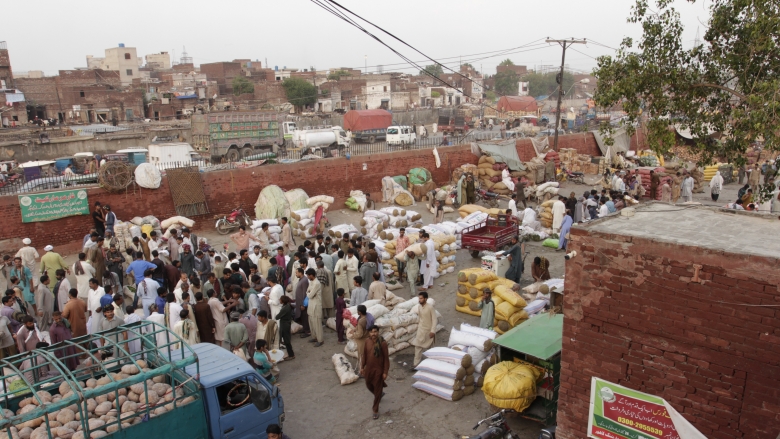Achieving the UN Sustainable Development Goals is impossible without addressing fragility, conflict, and violence (FCV), especially as two thirds of the extreme poor are projected to live in such situations by 2030. Improving economic growth, shared prosperity, and extreme poverty reduction in FCV settings at regional, national, and subnational levels is an immense development challenge. The impacts of fragility, conflict, and violence tend to persist, in some cases for a generation, leading to prolonged periods of low per capita income growth, crisis situations, and high and sometimes rising extreme poverty and hunger.
A new paper from the World Bank finds that strengthening governance and institutional capacity by supporting food programs such as those that focus on the welfare of the entire population, rather than just a fraction of it can help maintain and restore peace.
Main Messages
Strengthening food systems can be a powerful lever for change that contributes to ending poverty while maintaining and restoring peace.
There are many practical entry points for development practitioners working on agriculture and food to support progress across the four pillars of overall World Bank Group (WBG) engagement in FCV settings.
Interventions in food systems can help by strengthening governance and institutional capacity; preventing and responding to food crises; creating jobs through agribusiness development; and reducing conflict risk and environmental fragility.
Improving accountability, transparency, predictability, and targeting in food distribution, subsidy programs and investments can help reduce corruption and improve the social contract between the state and its citizens, most of whom live in rural areas.
The report is rich in examples of food system actions that have worked to prevent crises and conflict, help countries escape fragility traps, and mitigate spillover impacts of FCV. These include reducing sudden and unexpected food price spikes to reduce risks of social tensions and the worsening of food insecurity, as well as investing in next-season food production, replacing or upgrading assets, improving access to inputs, and improving climate resilience to prevent a worsening cycle.
